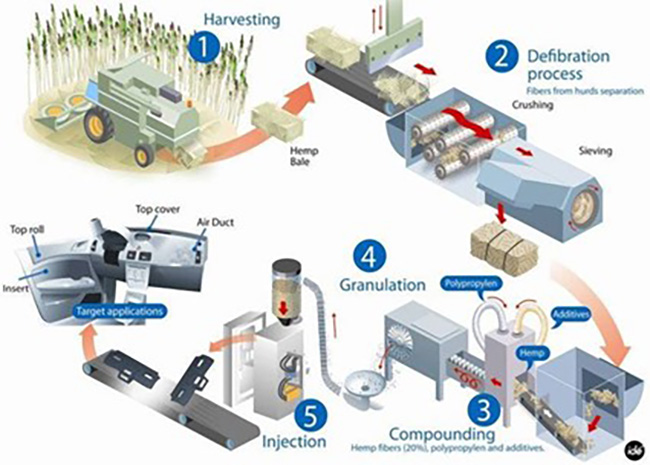Harnessing Hemp for Automotive Composites

Composite materials with natural fibers are presented as alternative and sustainable solutions for manufacturing finishes in fully recyclable vehicles. The French company “Automotive Performance Materials” has sought to leverage the country’s high hemp production to produce these composites.
For many years, vehicle weight reduction has been a topic primarily associated with sports cars. Thus, many automobile manufacturers have offered a wide range of accessories made with carbon fiber-reinforced plastic (CFRP) to gain a few seconds when crossing the finish line in the quarter-mile.
You can read: Natural Fibers are Trending for Plastic Reinforcement
Reduce Vehicle’s Weight with Natural Fibers
The reality is that reducing the weight of a vehicle also translates into fuel savings, helping to decrease the vehicle’s carbon footprint over its lifespan. Moreover, the constant search for new lightweight materials that do not sacrifice mechanical properties creates the perfect space for many companies to bring forth new ideas, such as plastics reinforced with natural fibers, and develop new, more sustainable products throughout the production chain and until the end of the product life cycle.
Utilizing Local Agriculture

Hemp Production for the Automotive Industry. Courtesy of Automotive Performance Materials.
In France, a company called Automotive Performance Materials has sought to leverage the country’s high hemp production to launch a product they have named NAFILean. The base of this product is polypropylene, which is mixed with hemp that has been previously harvested, crushed, and sieved. In proportion, 20% of the compound is made from hemp. Subsequently, after granulation, it is used as raw material for the injection of various interior vehicle parts, such as air ducts, inserts in the door panel, and the console structure. Peugeot already integrates these parts into some of its models.
Who Bears the Responsibility?
It would be interesting to see how the life cycle of these composite materials with natural fibers material closes when vehicles are sent to the scrapyard. While vehicle manufacturers often speak about circularity on their press portals, strategies to recover these parts at the end of their useful life remain in a gray area, and proper recycling treatment is yet to be addressed. Ultimately, producers should take responsibility for these issues due to social responsibility concerns.
